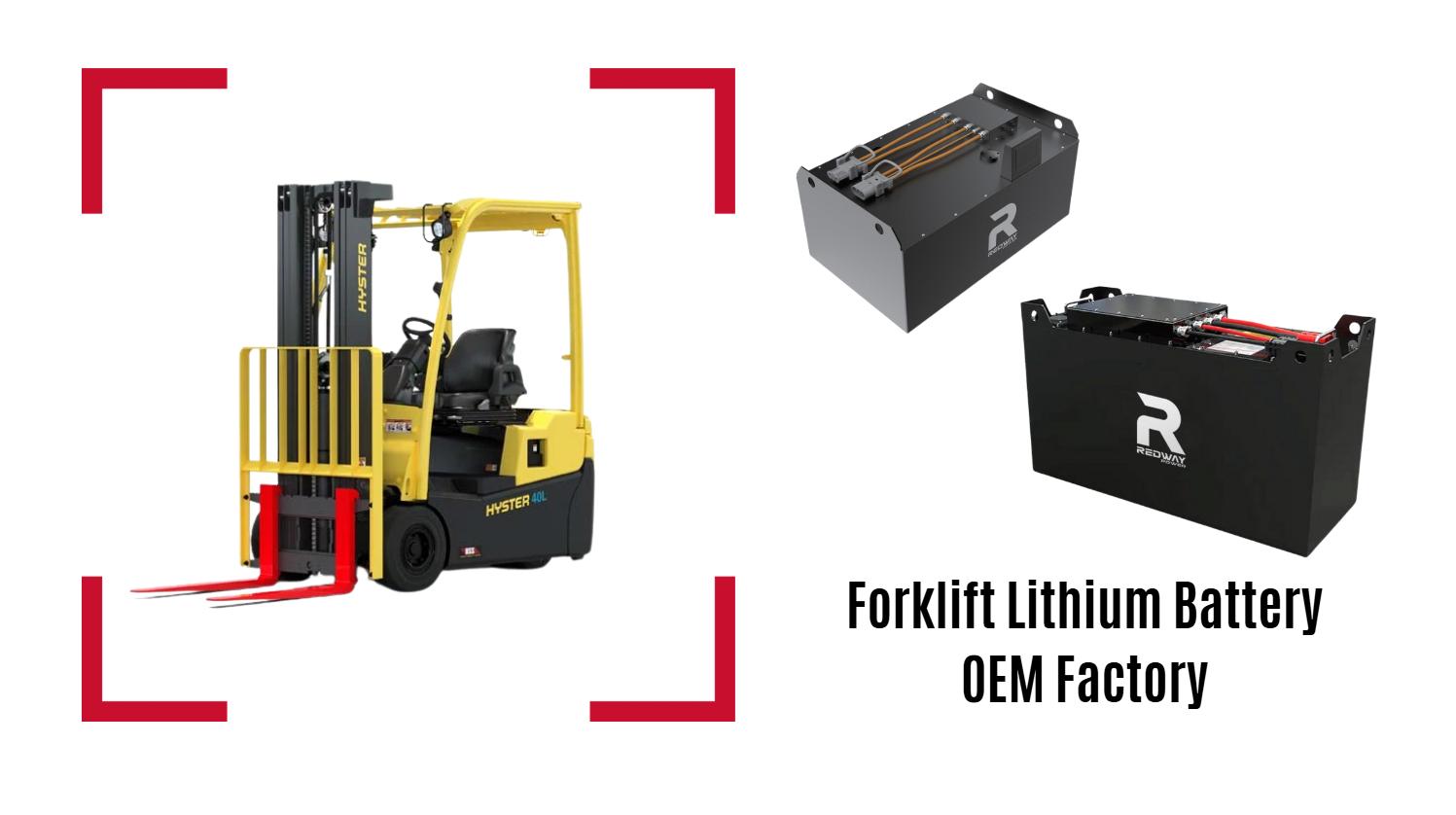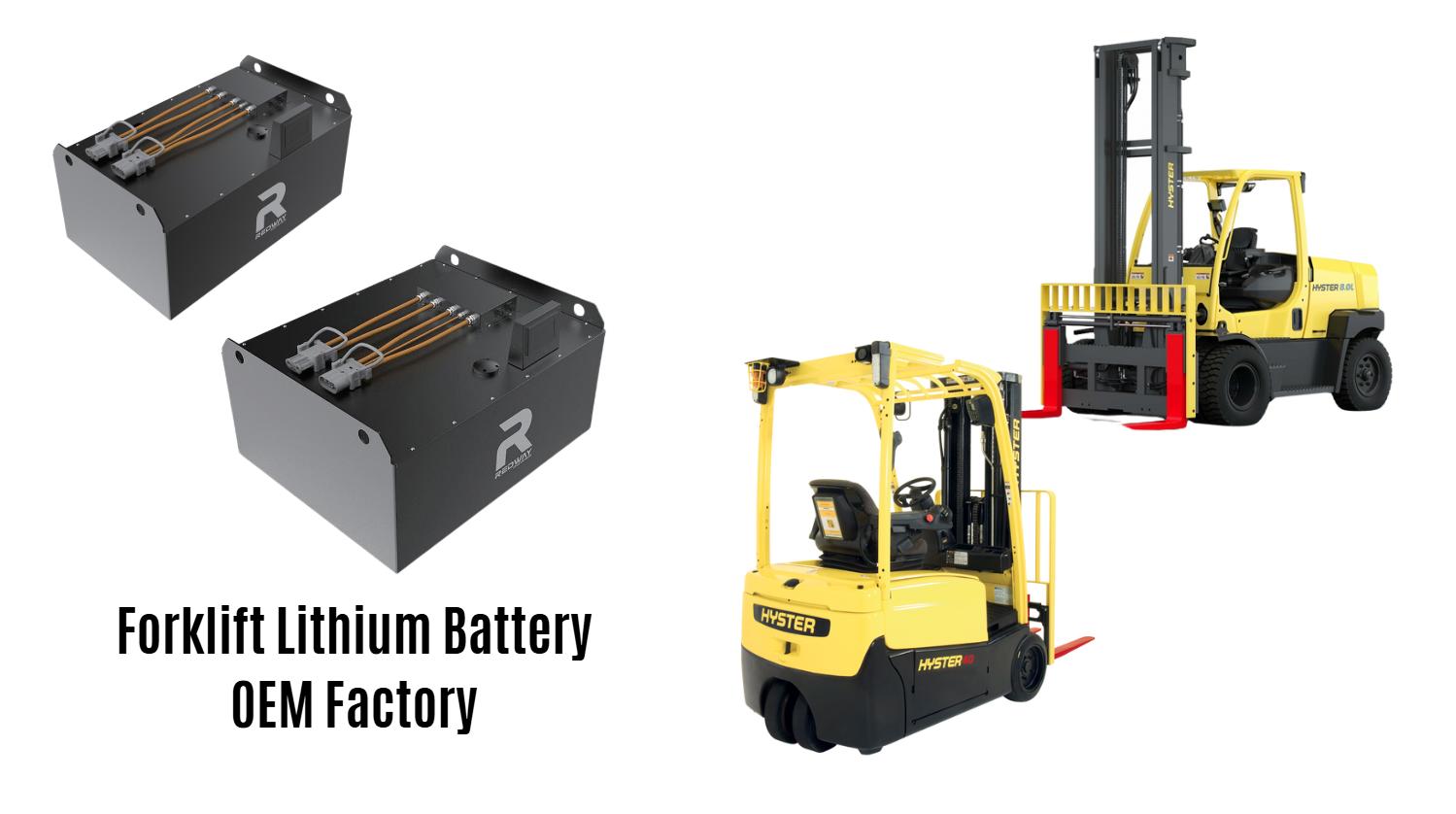Where Can I Buy Hyster LiFePO4 Forklift Batteries Wholesale?
Wholesale LiFePO4 batteries provide long-term cost and efficiency benefits for Hyster forklifts. Look for reputable suppliers to ensure longevity and safety. Which Hyster models benefit most from LiFePO4? Are there any safety concerns? What should I look for when assessing ownership costs?
What are the Key Advantages of Upgrading to LiFePO4 Batteries for My Hyster Forklifts?
LiFePO4 batteries offer longer lifespan, faster charging, and higher energy efficiency compared to lead-acid batteries. They are lightweight, maintenance-free, and provide consistent power output, improving forklift performance and reducing downtime.
Upgrading to LiFePO4 batteries for Hyster forklifts offers:
-
Longer Lifespan: LiFePO4 batteries last longer than lead-acid batteries.
-
Faster Charging: Reduced downtime with rapid charging capabilities.
-
Zero Maintenance: No need for watering, minimizing maintenance costs.
-
Improved Efficiency: Greater energy efficiency compared to traditional batteries.
-
Enhanced Safety: Safer operation with thermal stability.
Which Hyster Forklift Models Are Best Suited for LiFePO4 Battery Upgrades?
Hyster forklift models with electric powertrains, such as the H2.0-3.5XT, H3.5-6.0XNT, and H6.0-8.0XNT, are ideal for LiFePO4 upgrades due to their compatibility with advanced battery technologies and energy-efficient designs.
Many Hyster models benefit from LiFePO4 upgrades. Check the battery size to make sure LiFePO4 can be fitted into the forklifts.
Where Can I Find Wholesale Suppliers of LiFePO4 Batteries for Hyster Forklifts?
Wholesale LiFePO4 batteries can be sourced from specialized battery manufacturers, industrial equipment suppliers, or online B2B marketplaces like Alibaba. Ensure suppliers offer certifications and custom solutions for Hyster forklifts.
Potential wholesale suppliers include:
-
Redway Power: Offers OEM and ODM services.
-
Heltec Energy: Supplies a wide range of customizable LiFePO4 batteries.
-
Alibaba: Platform for connecting with various suppliers.
-
Spider-way: Sells LiFePO4 batteries for Hyster forklifts.
How Do I Choose the Right Voltage and Capacity for My Hyster LiFePO4 Forklift Batteries?
Match the battery voltage to your forklift’s specifications (e.g., 24V, 36V, 48V). Choose capacity (Ah) based on operational hours and energy requirements. Consult your forklift manual or a battery expert for precise sizing.
Consult your forklift’s documentation or existing battery specifications to determine the correct voltage. Assess your operational needs to determine the appropriate amp-hour (Ah) capacity.
What Safety Features (BMS, Thermal Protection) Should I Look for in LiFePO4 Forklift Batteries?
Look for built-in Battery Management Systems (BMS) for overcharge, discharge, and short-circuit protection. Thermal management systems prevent overheating, ensuring safe operation in demanding environments.
Essential safety features include:
-
Battery Management System (BMS): Protects against overcharging, overheating, and short circuits.
-
Thermal Protection: Ensures safe operation within specified temperature ranges.
How Long Can I Expect LiFePO4 Batteries to Last in My Hyster Forklifts?
LiFePO4 batteries typically last 5-10 years or 2,000-5,000 charge cycles, significantly longer than lead-acid batteries, depending on usage and maintenance.
What Kind of Warranty and Support Should I Expect When Buying LiFePO4 Batteries Wholesale?
Expect warranties of 3-5 years, covering defects and performance issues. Reliable suppliers offer technical support, installation guidance, and after-sales service.
A reliable supplier should offer:
-
Comprehensive Warranty: Covering defects and performance issues.
-
Technical Support: Assistance with installation, troubleshooting, and maintenance.
Where LiFePO4 batteries are ideal used for?
LiFePO4 batteries are ideal for electric forklifts, solar energy storage, EVs, and industrial applications requiring high efficiency, long lifespan, and reliable performance.
How do BIS certifications important?
BIS certifications ensure LiFePO4 batteries meet safety, quality, and performance standards, providing assurance of reliability and compliance with regulatory requirements.
How Do I Assess the Total Cost of Ownership When Switching to LiFePO4 Batteries for My Hyster Forklift Fleet?
Consider upfront costs, energy savings, reduced maintenance, longer lifespan, and lower downtime. LiFePO4 batteries often offer a lower total cost of ownership compared to lead-acid batteries.
Assess the total cost of ownership by factoring in:
-
Initial Purchase Price: The upfront cost of the batteries.
-
Lifespan: The expected lifespan of the batteries.
-
Maintenance Costs: The minimal maintenance requirements.
-
Energy Savings: The reduced electricity consumption.
-
Replacement Costs: The cost of replacing batteries over time.
What are the Key Logistics and Storage Considerations for Handling Wholesale LiFePO4 Battery Orders?
Ensure proper packaging to prevent damage during transit. Store batteries in a cool, dry place, away from direct sunlight and moisture. Follow manufacturer guidelines for safe handling.
Consider these logistics and storage factors:
-
Proper Packaging: Ensure batteries are securely packaged for transportation.
-
Temperature Control: Store batteries in a cool, dry environment.
-
Safety Regulations: Comply with all applicable transportation and storage regulations.
How Do I Ensure Compliance with Safety Regulations When Using and Maintaining LiFePO4 Batteries in My Hyster Forklifts?
Follow OSHA and local safety guidelines, use certified chargers, and regularly inspect batteries. Train operators on proper handling and maintenance to ensure compliance and safety.
Ensure compliance with safety regulations by:
-
Training Personnel: Provide training on safe handling, charging, and maintenance procedures.
-
Following Guidelines: Adhere to manufacturer guidelines and industry best practices.
-
Regular Inspections: Conduct regular inspections to identify potential safety issues.
Expert Views
Upgrading to LiFePO4 batteries for Hyster forklifts is a smart investment, but it’s crucial to choose the right supplier and consider all aspects of ownership. Evaluate your specific needs and select a reliable partner who can provide high-quality batteries and exceptional support.
Conclusion
Purchasing LiFePO4 batteries for your Hyster forklifts wholesale can yield significant benefits, including cost savings and improved operational efficiency. By carefully evaluating your needs, researching potential suppliers, and prioritizing safety and reliability, you can make a well-informed decision and optimize your material handling operations.
FAQ
-
What are the benefits of LiFePO4 batteries for Hyster forklifts?
Longer lifespan, faster charging, and zero maintenance.
-
How do I choose the right battery specifications?
Consult your forklift’s documentation and assess your operational needs.
-
What safety features are important?
Battery Management System (BMS) and thermal protection.
-
How long do LiFePO4 batteries last?
They typically offer a long cycle life.
-
What should I look for in a supplier?
Warranty, support, and a proven track record are essential.



